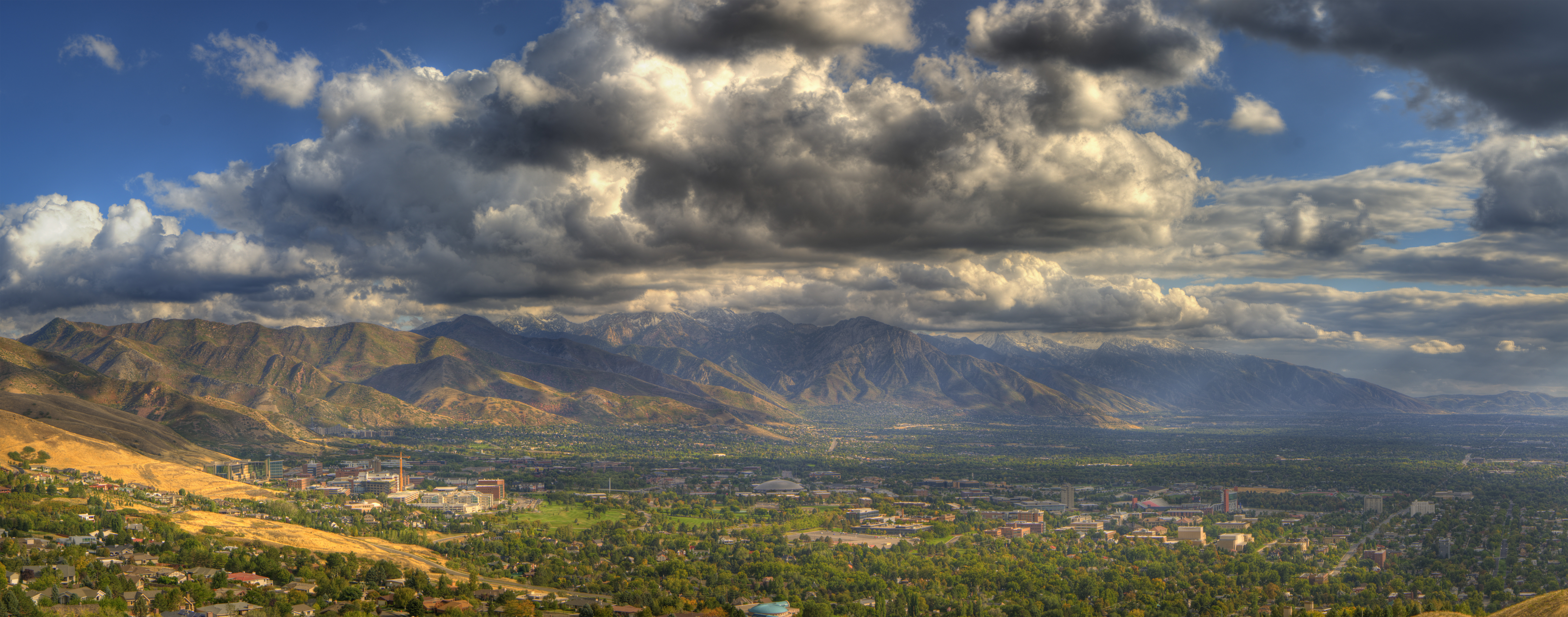Local Information

Visiting Salt Lake City and Utah
Salt Lake City lies in a mountain valley with the Wasatch Mountains to the east and north. The Oquirrh (pronounced "oaker") Mountains border the western edge of the valley. Salt Lake's official elevation is 4,330 feet/1,320 meters above sea level. The city is situated on land once covered by the prehistoric Lake Bonneville. This ancient lake existed within portions of Utah, Nevada, and Idaho, with an elevation rising from 4,200 feet to 5,200 feet (1,280 meters to 1,585 meters) at some points. The eastern and northern portions of the city are located on a series of terraces, or former beaches, which are known locally as "the benches."
-
Utah is in the Mountain Time Zone and uses Daylight Savings Time
-
City Elevation: 4,330 feet; 1,320 meters
-
Nearby Mountains: (Snowbird base) 8,100 feet; 2,469 meters
Things to Do in Salt Lake City
Salt Lake has a way of drawing people who might be called intellectual adventurers. Lovers of art and culture, nature and outdoors. And while there’s no shortage of places to bar hop (hey, no judgments!), we invite you to really get to know Salt Lake – its natural beauty, family-friendly attractions, enriching history, sporting spirit, and some truly “Only in Utah” experiences. Curious? You’ve come to the right place.
Getting around town
Adjusting to the Higher Altitude in Utah
Adjusting from a low-altitude locale to the higher altitude of Salt Lake, or Park City (7,000+ feet/2000+ meters) may cause some visitors to exhibit some mildly uncomfortable symptoms like these:
-
headaches
-
dehydration
-
body aches (“flu”-like symptoms in the muscles and joints)
How can you adjust comfortably to the higher altitude and avoid or diminish these kinds of symptoms?
First and foremost: Drink plenty of water! Utah’s water—right from the faucet—is clean, pure, healthy, and delightful. You’ll enjoy drinking LOTS of Utah water! Keeping your body hydrated is very important because high altitudes can dehydrate your system. This can be further complicated in arid regions like Utah. AND “jet-lag” can make matters worse! Water assists your body in flushing toxins, which is critical because altitude affects the body’s ability to dispose of carbon dioxide through breathing. Keep drinking water. Remember that if you feel thirsty, you have waited too long to drink.
If possible, on the first day you arrive, REST—and avoid strenuous exercise—to give your body time to adjust. Small and frequent meals of protein and complex carbohydrates can help keep symptoms to a minimum. Drink water BEFORE you feel thirsty!


